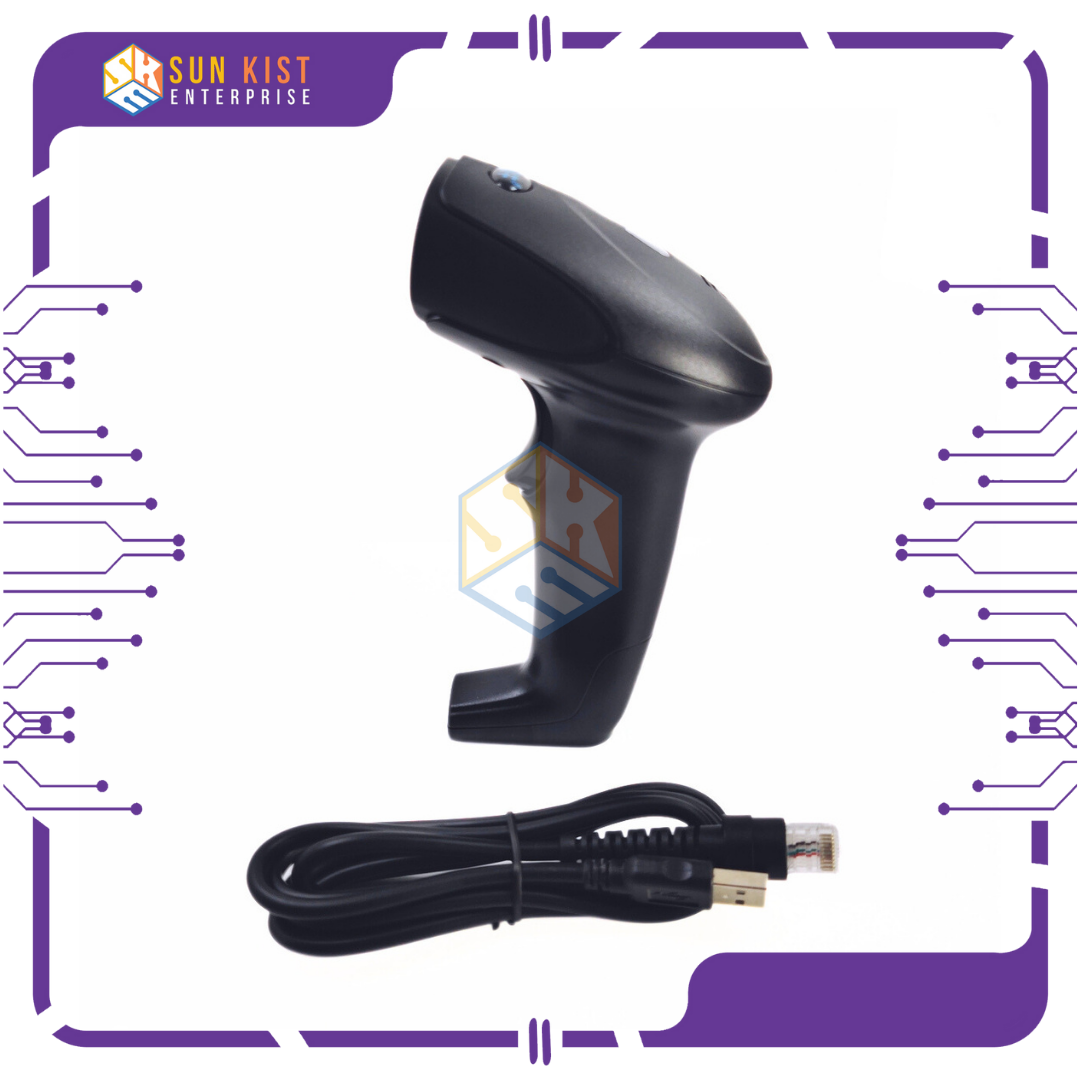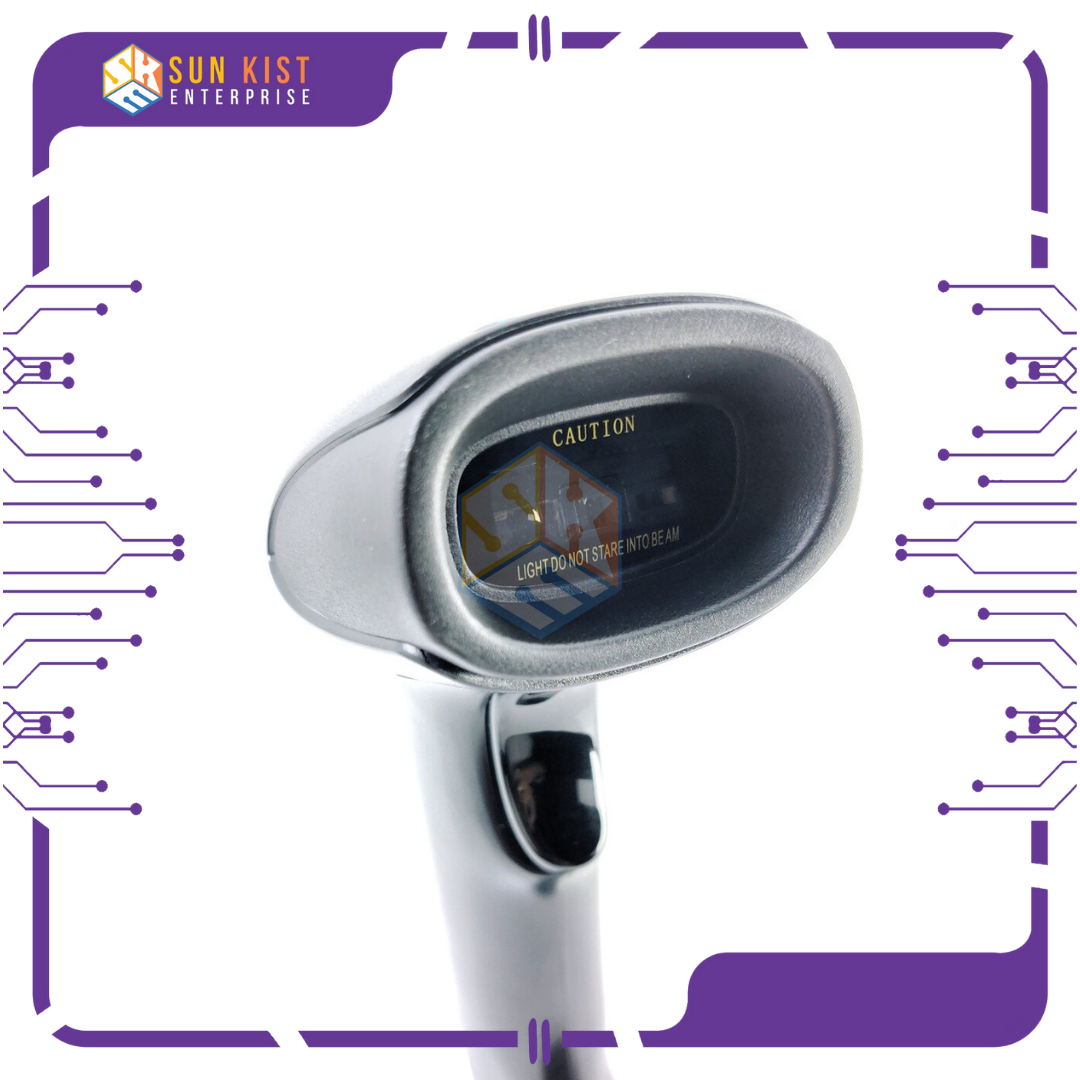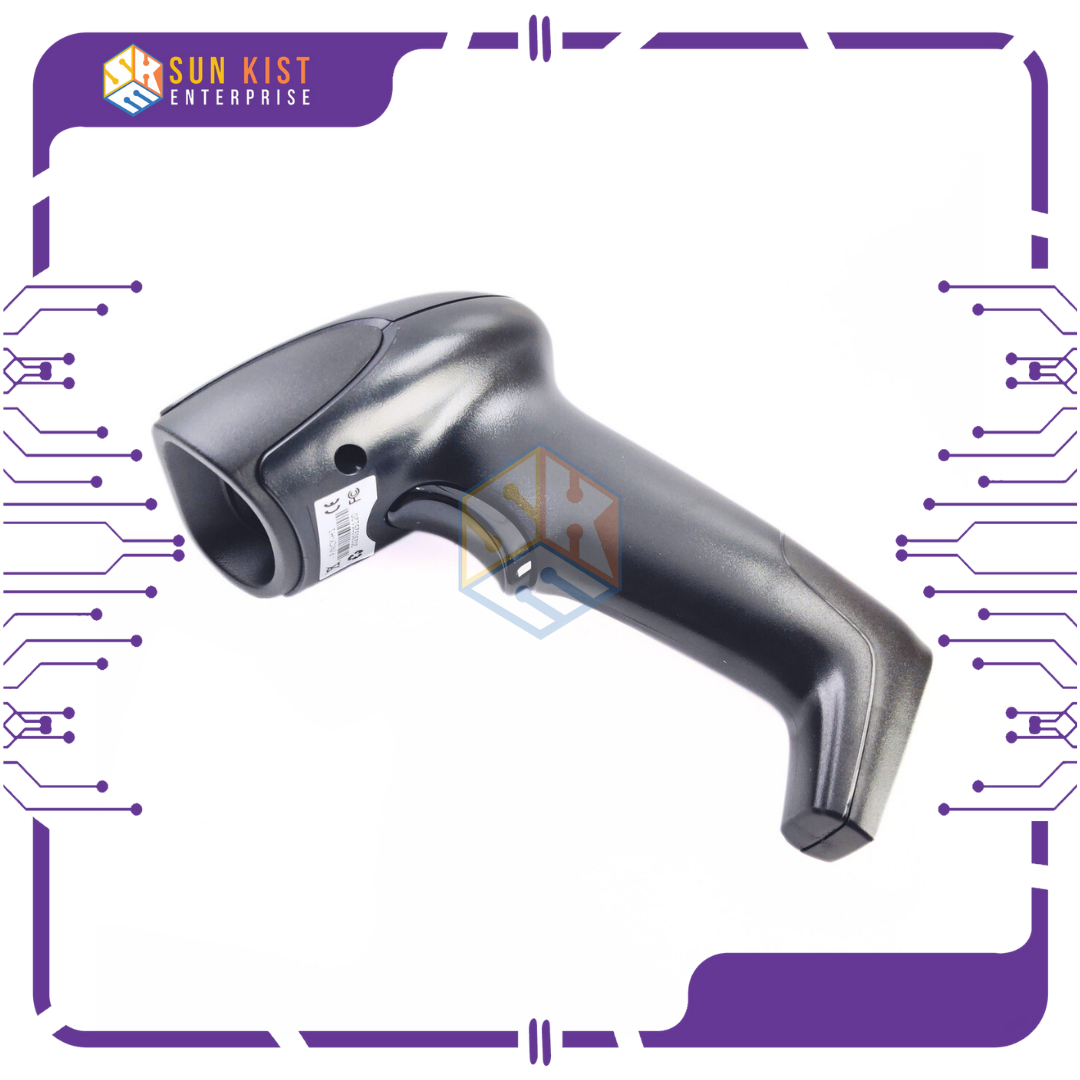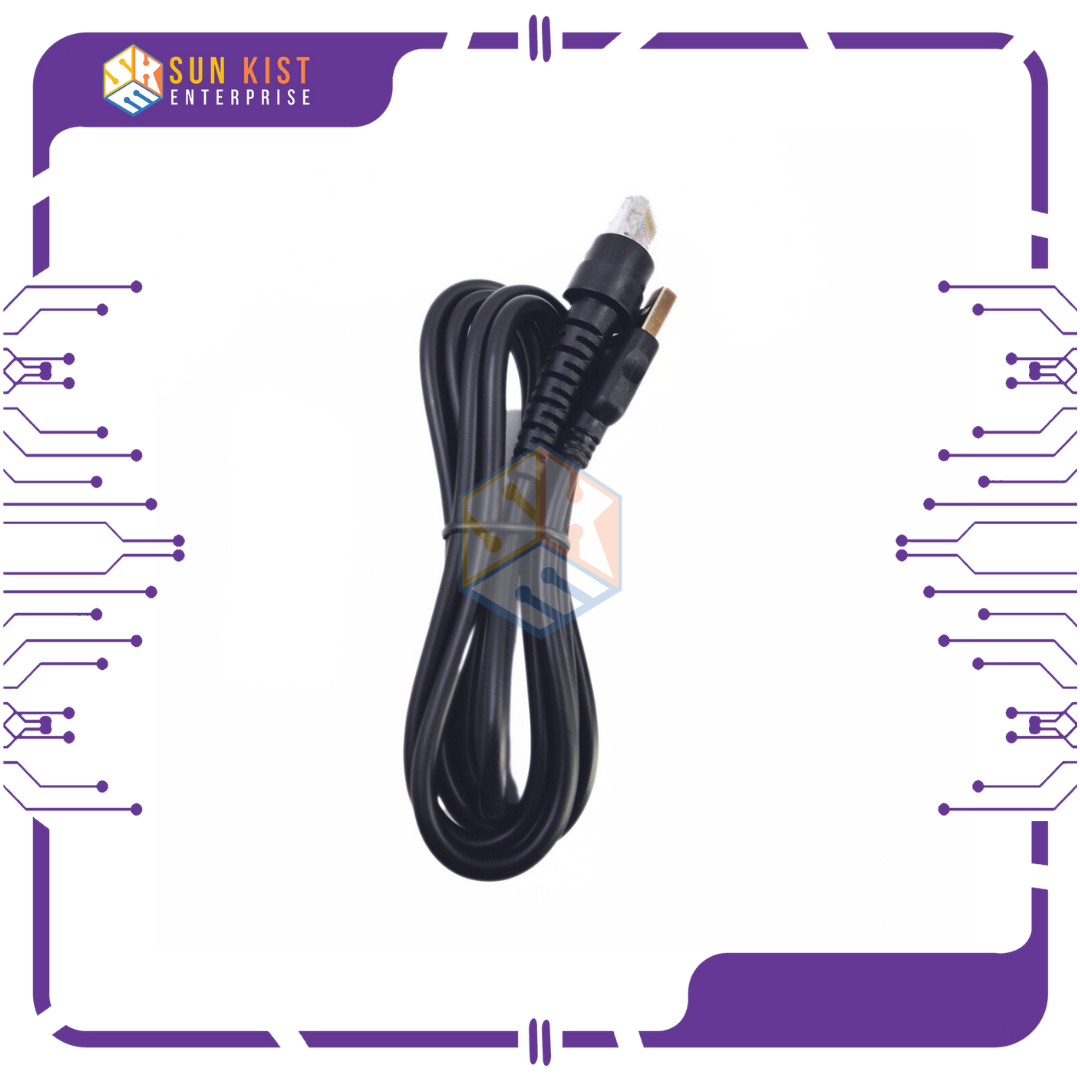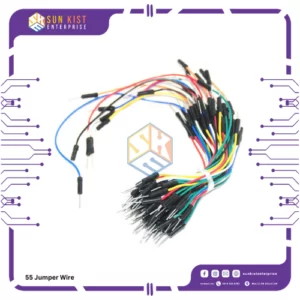Description
Barcode Scanner USB is a handheld or desktop device that connects to a computer or other electronic equipment via a USB (Universal Serial Bus) interface. Its primary purpose is to scan and read barcodes, which are visual representations of data often found on products, labels, or packaging. Here’s a description of its key features and characteristics:
1. Barcode Scanning Capability: The primary function of a USB barcode scanner is to scan and decode barcodes. It uses a built-in laser or image sensor to capture the barcode’s data, which can be in the form of lines, dots, or other patterns.
2. Connectivity: USB barcode scanners are designed to be connected to a computer or compatible device via a USB port. This connection provides power to the scanner and enables the transfer of scanned data to the connected device.
3. Compatibility: USB barcode scanners are compatible with a wide range of operating systems, including Windows, macOS, and Linux. They are also often compatible with various software applications, such as point-of-sale (POS) systems, inventory management, and document scanning.
4. Plug-and-Play: USB barcode scanners are typically plug-and-play devices, meaning they can be easily connected to a computer, and the necessary drivers are automatically installed. This simplifies setup and use.
5. Barcode Types: These scanners are capable of reading various types of barcodes, including linear (1D) barcodes such as UPC, EAN, Code 128, and Code 39, as well as two-dimensional (2D) barcodes like QR codes and Data Matrix codes.
6. Scanning Speed: Barcode scanners vary in scanning speed, with some capable of reading barcodes in milliseconds. The speed depends on the specific model and technology used.
7. Form Factors: USB barcode scanners come in different form factors, including handheld/wand-style, gun-style, and countertop/desktop models. The choice of form factor depends on the intended application and user preferences.
8. Durability: Depending on the model, barcode scanners can be designed for different levels of durability. Some are rugged and can withstand harsh industrial environments, while others are more suitable for office or retail use.
9. Data Transmission: Once a barcode is scanned, the data is transmitted to the connected computer as if it were entered using a keyboard. This data can be used for various purposes, such as inventory tracking, sales transactions, and data entry.
10. Ergonomics: USB barcode scanners are designed with user comfort in mind. They often feature ergonomic handles, trigger buttons, and stands for hands-free operation.
11. Power Source: The USB connection provides both data transfer and power to the scanner, eliminating the need for separate power sources or batteries.
12. Accessories: Depending on the model, USB barcode scanners may come with accessories such as stands, mounting brackets, or protective cases.
13. Cost: USB barcode scanners are available in a wide range of price points, from affordable options for home and small business use to high-end models for industrial and professional applications.
USB barcode scanners are widely used in retail, logistics, manufacturing, healthcare, and many other industries for tasks such as inventory management, order processing, and data collection. They offer a quick and accurate way to capture data from barcoded items, streamlining various processes and improving overall efficiency.

